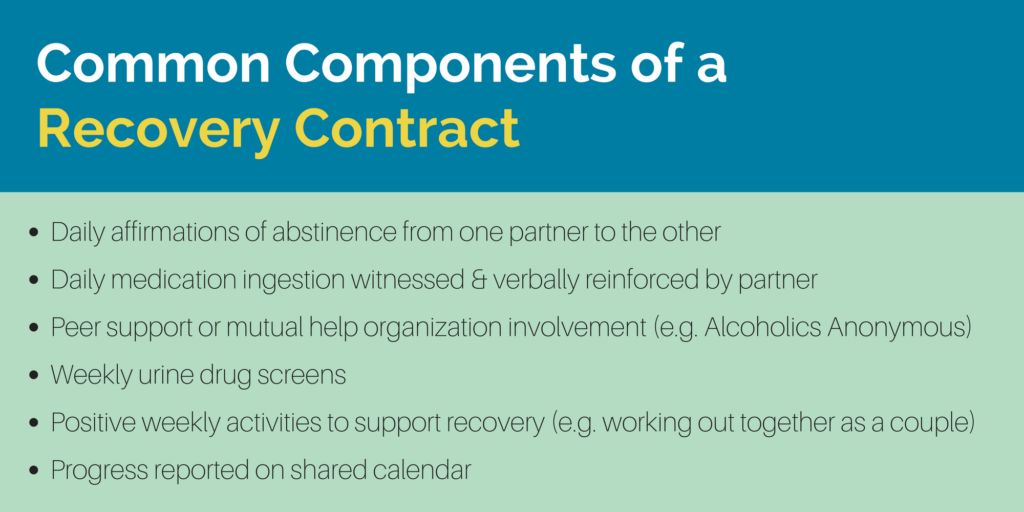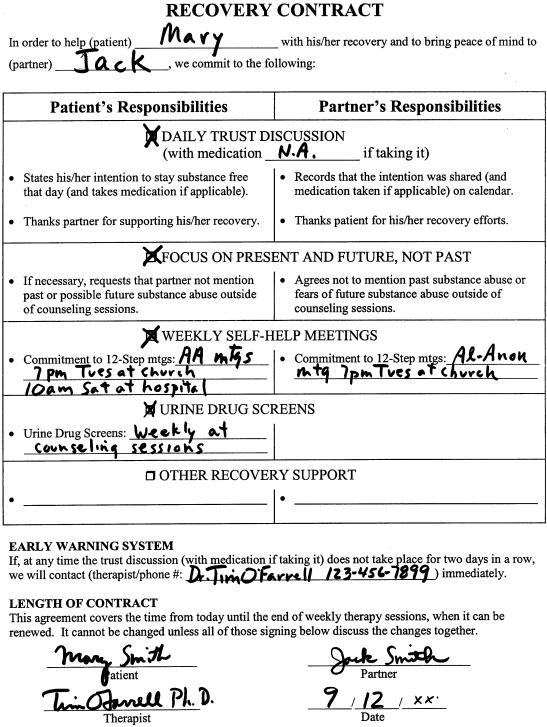Behavioral Couples Therapy (BCT)
Behavioral Couples Therapy is a form of behavior therapy that incorporates both the partner and the individual seeking help for alcohol or other drugs.
The goal of Behavioral Couples Therapy (BCT) is to improve the couple’s relationship while building support for abstinence. This means increasing positive activities and improving communication between partners, with both acceptance and change, to facilitate success in recovery from alcohol and other drugs.
WHAT HAPPENS IN BEHAVIORAL COUPLES THERAPY?
Behavioral Couples Therapy consists of typically 12-20 weekly outpatient couples sessions over a 3- to 6-month period. Sessions can begin as soon as the partner suffering from addiction seeks help (e.g., after detoxification, during/after treatment). To increase positive activities, commitment to the relationship, and improved communication, therapists will give instruction and model behaviors such as listening, expressing emotions, negotiating requests, doing random acts of kindness, and give couples appreciation exercises and homework assignments for practice.
One hallmark of BCT in promoting abstinence is ‘recovery contracts.’ These contracts involve the couple in daily rituals to reward abstinence.

EXAMPLE RECOVERY CONTRACT

WHAT IS THE THEORY BEHIND BEHAVIORAL COUPLES THERAPY?
Behavioral Couples Therapy is founded on the idea that behaviors do not occur in isolation, and results from rewards and consequences present in the environment. Rewards and consequences work to reinforce certain behaviors while inhibiting other behaviors. Family members of individuals with an alcohol or other drug use disorder have the ability to reward abstinence. When one partner has a substance use disorder, couples often have extensive relationship problems that create high levels of dissatisfaction, aggression, and instability (Fals-Stewart, O’Farrell, & Birchler, 2004). Relationship dysfunction is also associated with increased problematic substance use and increased rates of relapse (Maisto, O’Farrell, Connors, McKay, & Pelcovits, 1988). Behavioral Couples Therapy works to disrupt harmful patterns and restructure couple interactions in ways conducive to long-term, stable abstinence.
WHAT ARE THE ORIGINS OF BEHAVIORAL COUPLES THERAPY?
Traditional Behavioral Couples Therapy first took shape in the 1960s and 1970s, inspired by the behavioral and social learning movements that focused on operant conditioning techniques to address a variety of problematic behaviors. In 1969, the first case study applying a behavioral technique to a couple’s relationship problems was conducted (Stuart, 1969), and by 1973, researchers had begun to apply behavioral change techniques with an emphasis on skills training to treat relationship distress (Weiss et al., 1973). In the early 1970s, the National Institute on Alcohol Abuse and Alcoholism (NIAAA) called for studies to test the effectiveness of couples and family therapy to improve substance use disorder outcomes (Keller, 1974).
Historically, substance use disorders have been viewed as an individual problem (a moral or character flaw of the individual), and thus have been treated individually and in isolation. However, research from the last three decades has worked to identify the important role partners and families play in the origin and maintenance of addictive behavior. In BCT, addiction is conceptualized as existing within part of the larger family system, treating couples or families as a single unit or whole.
EVIDENCE FOR BEHAVIORAL COUPLES THERAPY
A large and growing body of evidence supports the effectiveness of Behavioral Couples Therapy. Dozens of randomized clinical trials have found evidence for Behavioral Couples Therapy being more effective than both the placebo or no treatment at all (Baucom et al., 1998; Christensen & Heavey, 1999;Baucom et al., 2003; Shadish & Baldwin, 2005; Snyder et al., 2006). Research also has shown Behavioral Couples therapy to increase abstinence rates and improve relationship functioning better than classic individual-based treatment, while also reducing social costs, domestic violence, and emotional problems in children of the couple (O’Farrell & Schein, 2000).
- ADDITIONAL CITATIONS
-
- Fals-Stewart, W., O’Farrell, T. J., & Birchler, G. R. (2004). Behavioral Couples Therapy for substance abuse: Rationale, methods, and findings. Science & Practice Perspectives, 2(2), 30-41. doi: 10.1151/spp042230
- Gabbard, G. O. (2009). Textbook of psychotherapeutic treatments. American Psychiatric Association Publishing.


